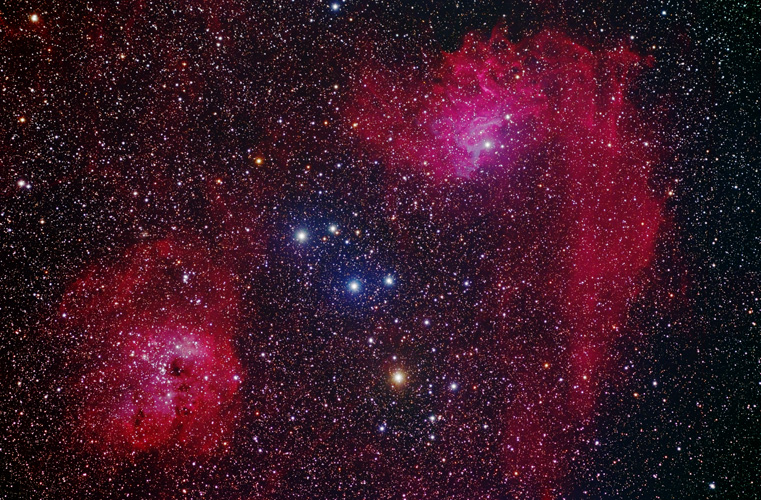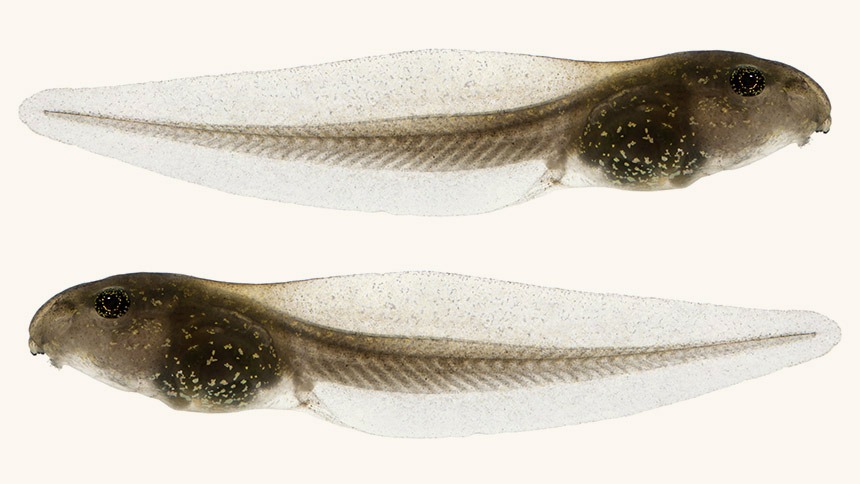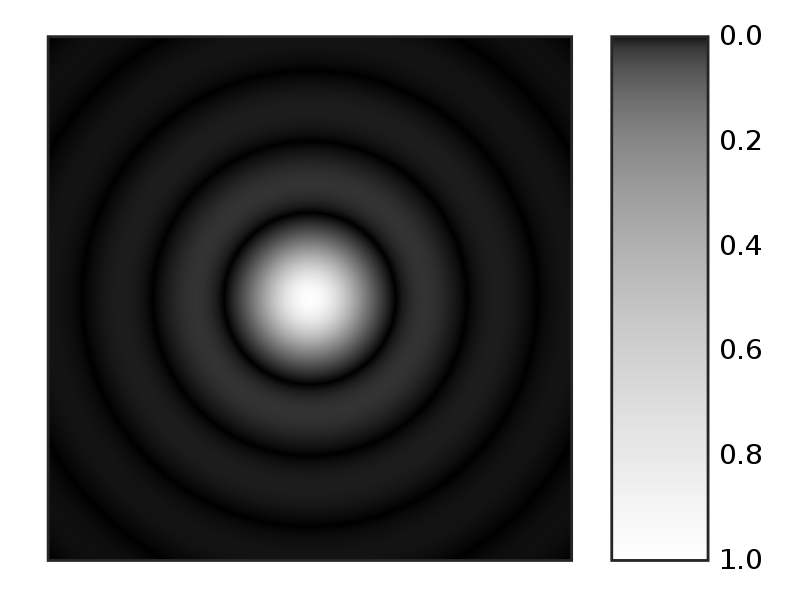I have never really understood IC 410, which is also known as the Tadpole Nebula. Yes, of course I realize that the "tadpoles" are just another version of "
pillars of creation", the tall dust pillars that are sculpted by energetic radiation from young stars born out of a dusty nebula. Well, what I have never understood is where the recently formed young star cluster is, because I have never really been able to "see it" even in photographs!
But I understand things by looking at pictures, so I need to find pictures to make me understand.
LRGB photo of the Tadpole nebula (left) and the Flaming Star nebula (right.)
Photo: Alson Wong.
Hα, OIII and SII mapped color image of the Tadpole Nebula and the Flame Nebula.
Photo: Sam Saeed.
As you can see from the two pictures above, the Tadpole Nebula (IC 410) and the Flaming Star Nebula (IC 405) look very similar in RGB photography. But in narrowband photography, it becomes obvious that IC 410 is bright in OIII (mapped as blue), and therefore it is much more highly ionized than its seeming "neighbour" IC 405. To be so much more ionized, IC 410 must contain many more hot stars than IC 405, which is just being visited by O9.5V-type star AE Aurigae. And indeed, there are more hot stars in IC 410 than in IC 405.
NGC 1893, ionizing cluster of the Tadpole Nebula.
Photo: Bob Franke.
Normally I'm no great fan of narrowband imagery, but I must admit that Bob Franke's very fine narrowband picture of the Tadpole Nebula and cluster NGC 1893 makes the (pink-looking) stars stand out.
So this is the lesson for today. IC 405 (the Flaming Star Nebula) and IC 410 (the Tadpole Nebula) look deceptively similar in RGB imagery, but they are in fact very different. The Flaming Star Nebula is just a cloud of gas and dust being temporarily ionized by runaway star AE Aurigae passing by. IC 410, the Tadpole Nebula, is a bona fide region of massive star formation, and the nebula is highly ionized. The Tadpole Nebula is much farther away than the Flaming Star Nebula too, 12,000 light-years away versus "only" 1,500 light-years for the Flaming Star Nebula.
So tadpoles can be more impressive than you think, at least when they come in the form of nebulas!
Ann
 Star Formation in the Tadpole Nebula
Star Formation in the Tadpole Nebula



